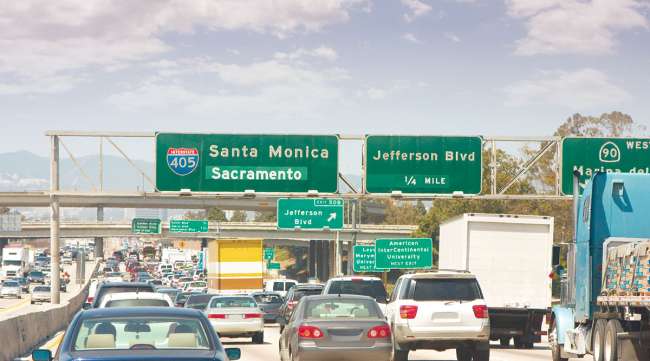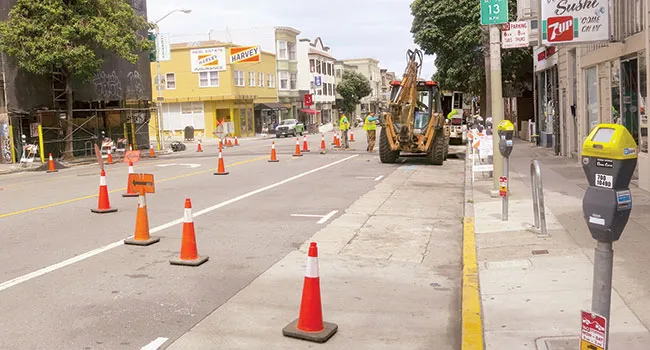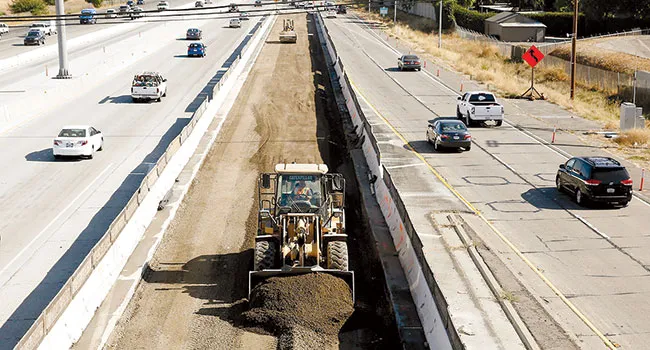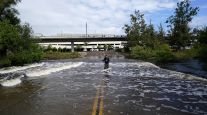Staff Reporter
Report: Caltrans Budget to Take Hit Due to Green Vehicles

[Stay on top of transportation news: Get TTNews in your inbox.]
California drivers will experience worse highway and road conditions because of lost diesel and gasoline tax revenue from a $4.4 billion drop in state coffers that legislative analysts predict will occur in 10 years from regulations outlawing traditional cars and trucks.
Achieving the California Legislature’s ambitious greenhouse gas reduction goals in transportation by increasing the adoption of zero-emission vehicles and lowering the vehicle miles traveled by people “will in turn have significant impacts on state transportation revenues and programs,” declared the Legislative Analyst’s Office, a state nonpartisan fiscal and policy adviser.
The financial implications of California’s plans to revolutionize the way people and businesses use transportation and remove gas- and diesel-powered vehicles was outlined Dec. 13 in the legislative office’s latest report, “Assessing California’s Climate Policies — Implications for State Transportation Funding and Programs.”
The report predicted that “California’s climate policies will have long‑term impacts on state transportation funding and programs.”
Analysts forecast annual state transportation revenues will decline $4.4 billion (31%) during the next decade. The California Department of Transportation is responsible for maintaining and rehabilitating the state highway system (including 52,000 lane miles of highways and 13,000 bridges). The state pays for corrective and preventive maintenance projects through the Highway Maintenance Program and for highway rehabilitation/reconstruction through the State Highway Operation and Protection Program.
Caltrans’ highway maintenance and rehabilitation programs will bear the brunt of lost revenue and be hit by “significant funding declines” since they are mainly paid for by state fuel taxes. For the 2023‑24 period, the gasoline excise tax is set at 57.9 cents a gallon, and the diesel excise tax is 4.41 cents per gallon. California also gets money from a 13% sales tax on diesel, with 10.5% dedicated to state transportation programs. The remaining amount is used for other state and local purposes.
Analysts project funding for these Caltrans programs will drop $1.5 billion (26%) from $5.7 billion to $4.2 billion by 2034‑35. “Correspondingly, these programs will experience a reduction in the number of projects Caltrans can complete on the state highway system, likely resulting in a decline in highway conditions for drivers,” the report stated.
Other losers will be cities and counties that receive part of the state’s transportation revenues to support local streets, roads and related infrastructure. The state’s 58 counties and 482 cities own/maintain 330,000 lane miles of roads, 12,000 bridges and other roadway infrastructure.

Road construction in Valencia, Calif. The report says funding for cities and counties for local roads is expected to decrease $900 million by 2034-35. (torbakhopper/Flickr)
“Funding provided to cities and counties for local streets and roads will also experience significant reductions under this [GHG] scenario, decreasing by $900 million (26%) by 2034‑35,” the report said.
Also, local governments mostly own and operate 200 transit agencies that provide public buses, trains, ferries and paratransit vans, and they will feel a major financial pinch since they rely on state transit funding. Poised to lose one-third of its total funds, the State Transit Assistance program will be short $300 million by 2034‑35 since it is solely supported by diesel sales tax revenue that will gradually decrease as diesel-powered vehicles are taken off the roads.
“In cases where [STA] programs distribute funding to local governments, such as for local streets and roads and transit, the magnitude of the impacts will vary across jurisdictions,” analysts said. “In general, jurisdictions that historically have been more dependent on state funding for their local efforts will experience greater impacts across their transportation systems, likely resulting in reduced services and/or poorer road conditions for their residents.”

Road construction on Interstate 80 near Sacramento. (Rich Pedroncelli/Associated Press)
Not only did the Legislative Analyst’s Office flag lost revenue, but it also alerted lawmakers that today’s transportation costs are expected to soar in the future — causing even greater lost revenue and larger budget drops than those predicted in the report — as roads and infrastructure need repairs because of heavier alternative vehicles compared to conventional ones, rising sea levels, flood damage and other climate change manifestations.
Legislative analysts listed four ways state lawmakers can raise money to help offset projected lost revenue: increase existing fuel and vehicle taxes; shift transportation costs to other funding sources; lower transportation program spending; and adopt new transportation-related charges, such as road charges and new alternative fuel taxes.
“We recommend the Legislature begin to develop a plan for how it will address impending declines in state transportation revenues,” the analysts concluded.
Want more news? Listen to today's daily briefing below or go here for more info:




